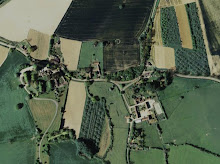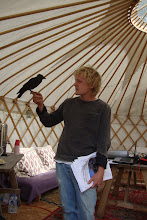
Last weekend I had a party in the 1920s orchard at Charingworth. I invited the people I work with in the market garden and a few other friends and orchard helpers. Three of the guests were cider-makers so we were well supplied with cider and perry, and also got to try out my elderflower champagne for the first time. 'Too yeasty' is often the verdict with this kind of venture, but actually it was really good. Young, fresh, very fizzy and refreshing. A bit like me I hear you say? Ah gags!



A cheeky tribe of scrumpers, armed and dangerous! It takes some skill to get your face that muddy.
 Orchards are great for camping as they never get too windy. I was pitched a little close to my hive of sleeping bees though.
Orchards are great for camping as they never get too windy. I was pitched a little close to my hive of sleeping bees though.

It was the first time I had tried this back-to-nature minimalist fire pit design for the BBQ. It worked really well, and I would recommend aligning it with the direction of the prevailing wind to maximise air-flow. We cooked Cumberland sausages, burgers, and spicy 'Hungarian Hot Wax' peppers stuffed with coconut rice. Use British charcoal if you can - it burns so much better and the woodland management involved in producing it benefits many species. I like to think Ray Mears would have loved it, although someone brought tin foil and I know he hates that.


Everyone knows that there is nothing quite as entrancing as fire, and when you combine it with the gaping mouth of a drunken man it becomes a special pleasure.


No ultra-hip orchard knees-up would be complete without a sprinkling of sky lanterns (or should that be a twinkling?). I'm sure the NFU would have something to say about that, but apparently the wheat is not ripe enough to burn yet and life is too short anyway. Our ones didn't have any metal wire in them making them 100% biodegradable and safe for cows etc.










.JPG)
.JPG)
.JPG)
.JPG)
.JPG)
.JPG)
.JPG)
.JPG)
.JPG)





















